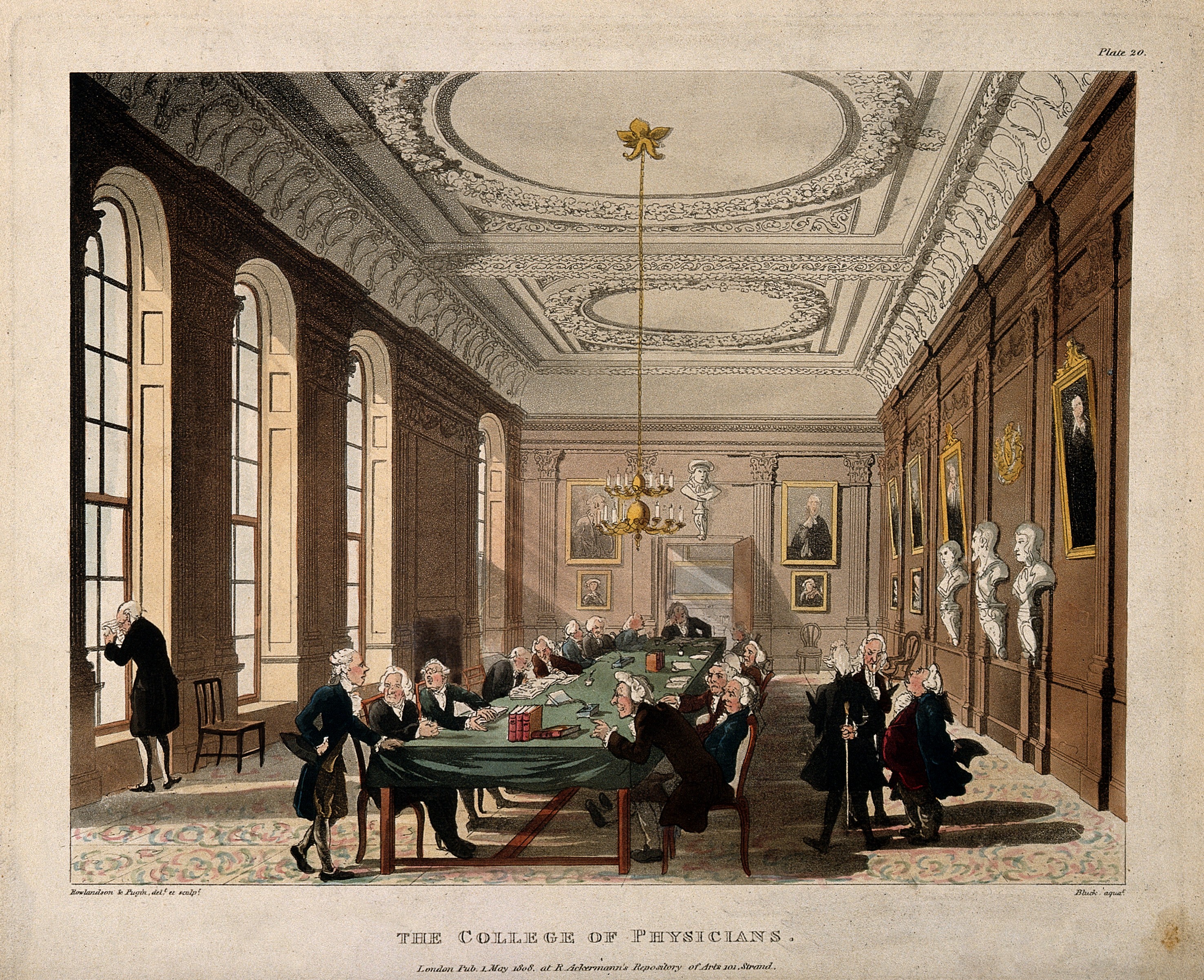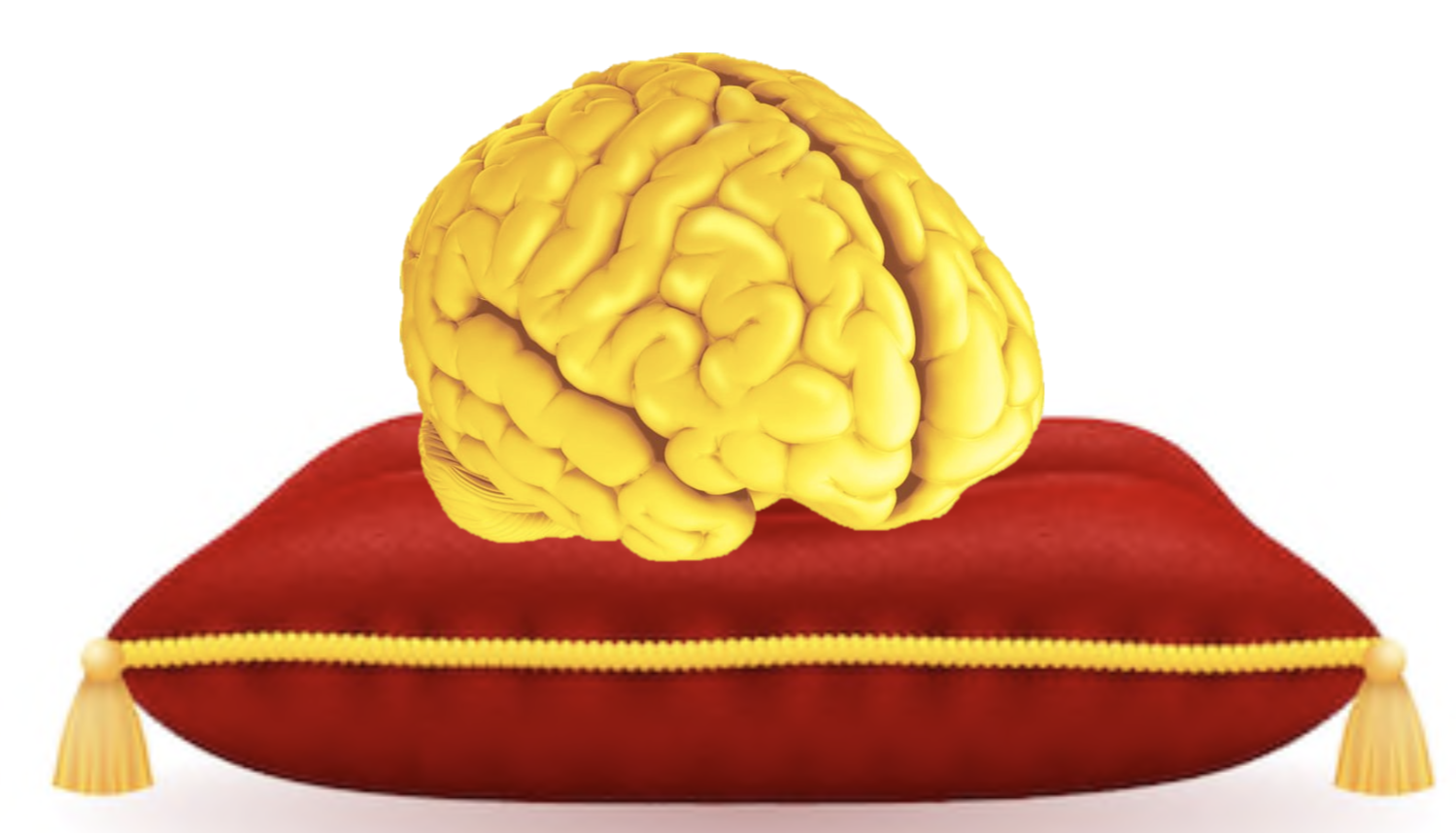The Picture of Health
We focused on Henry VIII’s traumatic brain injury this month as a potential explanation for the volatile change in his personality. However, Henry has long been a favorite subject of medical historians due to his multitude of health problems. To give you a sampling from his impressive medical rap sheet, he experienced malaria (twice), ulcers, smallpox, and fistulas (impaired connections between organs), gout, and morbid obesity. He also lived during a golden age of epidemics, with the bubonic plague, influenza, typhus, and the sweating sickness (a form of viral pneumonia) sweeping Great Britain during his reign. In fact, historians believe that one of these epidemics killed his brother, making Henry the heir to the throne. So it’s no surprise that Henry experienced so many health problems. What might be more surprising is that his experiences as a patient inspired him to take some remarkable steps to modernize medicine.

Good Humor
During Henry’s reign, there was a paradigm shift in the medical field. At the time, physical and mental health were viewed through a spiritual lens. Religious leaders had a great deal of influence in deciding how diseases should be treated, and spiritual healers made fortunes pedaling their questionable remedies. However, in the late 1510s and early 1520s, translations of the work of Greek philosopher and physician Aelius Galeus revolutionized the field. Though he died in 210 AD, Galeus was ahead of his time, and his newly rediscovered theory modernized medicine by rooting the cause of illness in the physical rather than spiritual sphere. The “Galenic theory” hypothesized that sickness was the product of an imbalance in one of four bodily fluids called “humors” – phlegm, blood, and black or yellow bile. Therefore, cures usually involved things like bloodletting or sweating a patient out (Henry’s daughter, Queen Elizabeth I, is said to have recovered from smallpox after being wrapped in a scarlet cloth and placed next to a fire). This all sounds far less scientific than our own experiences at a doctor’s office, but compared to prayers and potions, it was a major step forward.

License to Kill
In parallel with the changes in medical theory, Henry, with the encouragement of his chief royal physician Thomas Linacre, pushed through several important pieces of legislation that established standards for doctors. In 1511, Parliament passed the Medical Act, which required any doctor that did not receive a degree from Oxford or Cambridge to get approval from a bishop in order to practice. In London, the bishop was aided by a panel of physicians. For the first time, practicing medicine required some standardized credential, and the witch doctors were shaking.

In 1518, doctors were further legitimized by the creation of the Royal College Physicians (RCP). There were already trade unions of sorts for surgeons, but Linacre wanted the RCP to be distinctly academic and highly reputable. The idea was that after earning a medical degree, doctors would take an oral exam through the RCP in order to obtain their license. Once again, Oxford and Cambridge degrees were elevated above the rest, as they were required for any voting member of the organization. You love to see that elitism in academia is nothing new! Centuries of conflict followed where the RCP had to battle other licensing entities, but the organization still survives today. Over the years, the RCP has been involved in distributing medical literature, outlining regulations for hospitals, and advising the government in matters of public health. The RCP was a truly revolutionary idea to vet healthcare professionals, but it has evolved with the times to address the most pressing needs of the medical field.
Even some of Henry’s most shameful decisions as king ended up benefitting public health in the end. When he decided to abolish the Catholic monasteries in England, he inadvertently abolished the monk-run hospitals that cared for the poor. With a little nudge from his subjects, he decided to reinstitute St. Bartholomew’s Hospital in London, the oldest and one of the most highly regarded hospitals in England. It is still operating under the charter passed by Henry in 1547. So there, Stefanie and I can keep our Henry VIII ornaments on our Christmas trees with a clear conscience.

Bedside to Bench and Back Again
Henry’s complicated health certainly had negative impacts on his ability to rule (and be a good/non-murderous husband), but it also may have inspired his groundbreaking reforms in the medical profession. Experiencing the importance of medicine at an early age during his first bout of malaria, Henry knew that a doctor’s decisions could determine life or death. With the encouragement of his personal physician, he instituted laws that lent credence to the medical community, at the expense of healers and charlatans. The institutions he founded are still in place and continue to push medicine in Great Britain forward. Often in science, we talk about making changes from “bench to bedside,” that is, taking something from the lab and using it to treat patients. But in the case of Henry VIII, I think the process went bed to bench and back again; his experiences as a patient motivating changes at the highest levels of government, and then in individual physician-patient interactions as a result.
References
Baker, R. (2019, February 7). Unhealthy Times of Queen Elizabeth I. Retrieved from https://www.cebm.net/2018/10/11378/
Feis, J. R. (2013). Henry Viii: Patient and Patron of Medicine (dissertation).
History of the Royal College of Physicians. (2019, November 25). Retrieved from https://www.rcplondon.ac.uk/about-us/who-we-are/history-royal-college-physicians
Hutchinson, R. (2018, January 22). Mad, Bad, and Dangerous to Know: Henry VIII’s Medical History. Retrieved from https://cvhf.org.uk/history-hub/mad-bad-and-dangerous-to-know-henry-viiis-medical-history-2/
Nutton, V. (2020, January 1). Galen. Retrieved from https://www.britannica.com/biography/Galen
Team, H. (n.d.). The Death of Arthur Tudor: Did Bubonic plague put Henry VIII on the throne? Retrieved from https://www.historyanswers.co.uk/kings-queens/the-death-of-arthur-tudor-did-bubonic-plague-put-henry-viii-on-the-throne/


2 thoughts on “Taste of His Own Medicine”